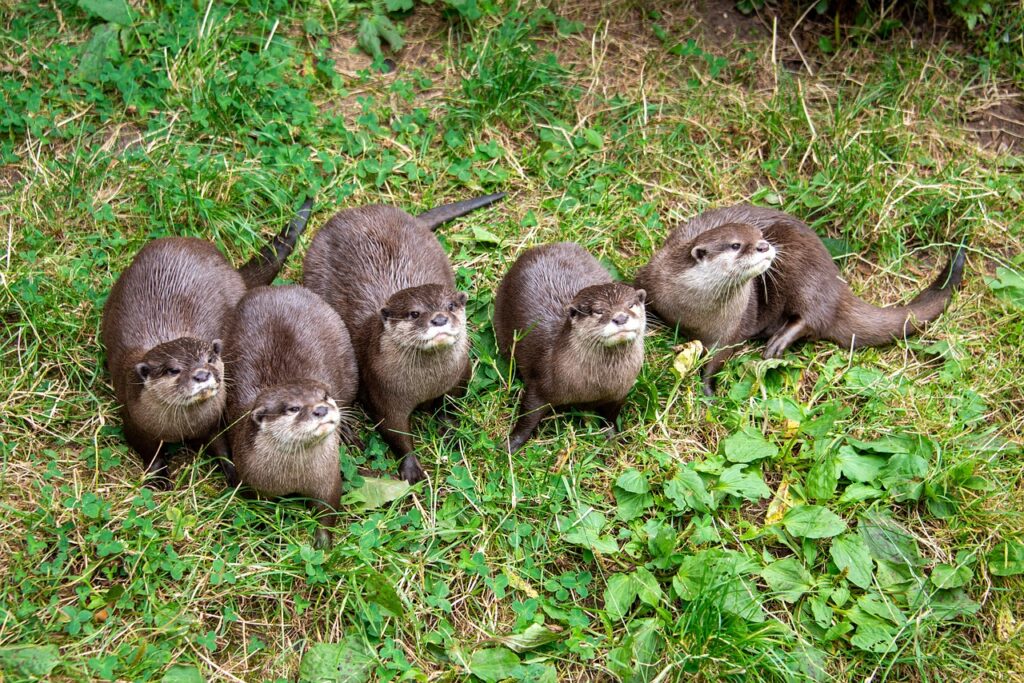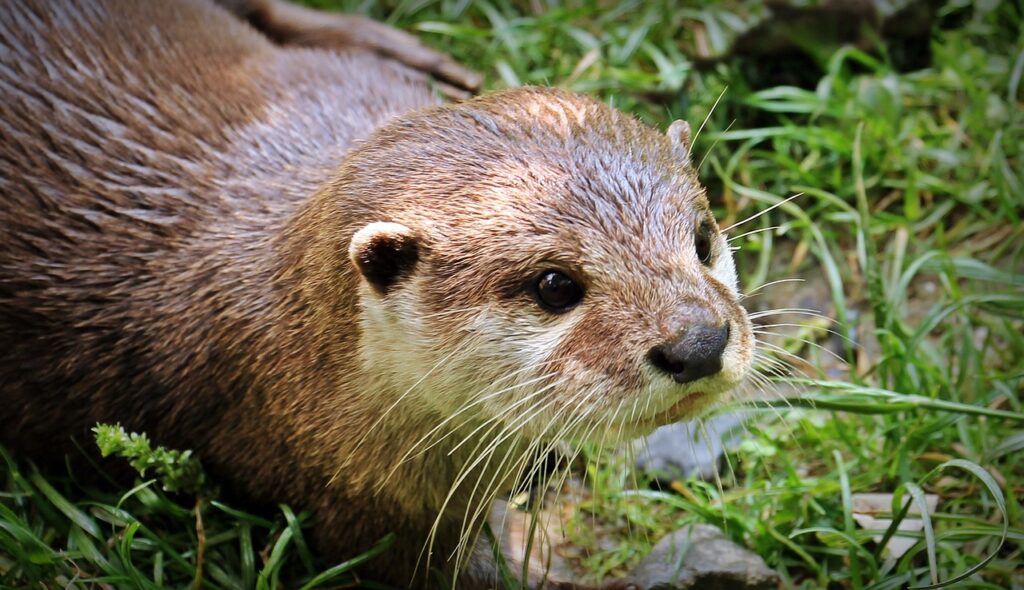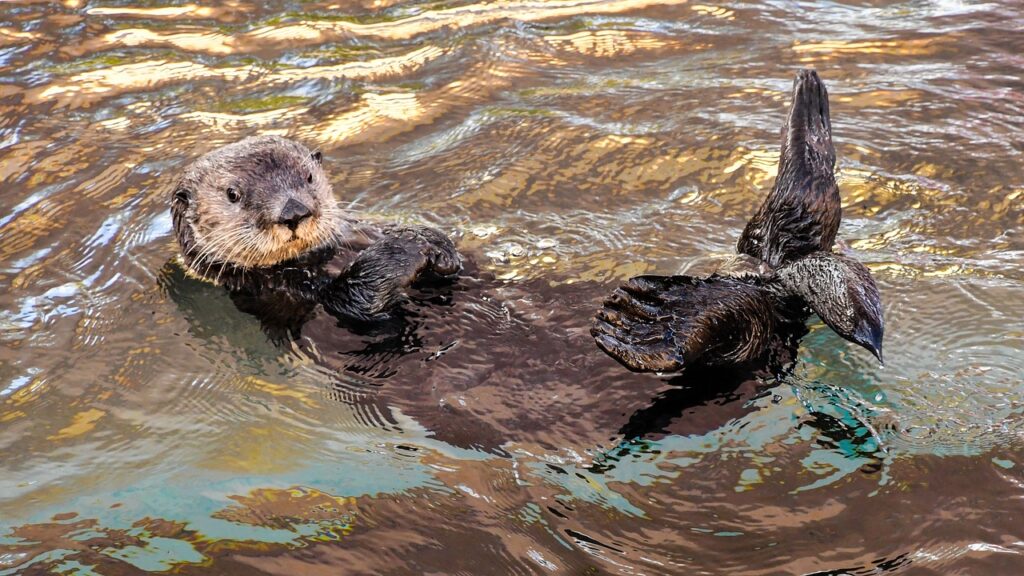World of Otters
Cute otters, those lively stream artists and sea aerialists, have caught our hearts with their cute jokes and amazing variations. Yet, what’s the genuine story behind these alluring animals? How about we dive into the captivating universe of otters and find the reason why they’re something beyond adorable appearances in the set of all animals.
Meet the Family: Not All Otters Are Made Equivalent
When you picture an otter, what rings a bell? A smooth, fuzzy animal sliding down a riverbank or airing out shellfish on its stomach? Indeed, you’re dead on, yet there’s something else to the otter family besides what might be immediately obvious.
Did you had any idea there are 13 types of otters spread across the globe? From the little Asian little pawed otter to the huge monster otter of South America, these creatures arrive in an amazing assortment of shapes and sizes.
The absolute most notable otter species include:
Ocean otters
North American waterway otters
European otters
Monster otters
Asian little ripped at otters
Every species has its own exceptional qualities and variations, however they all offer an affection for water and a talent for energy.
Otter Life structures 101: Worked for Sea-going Life
They are marvelously intended for life in and around water. Their smoothed out bodies, webbed feet, and thick fur make them magnificent swimmers and jumpers.
However, did you had any idea that ocean otters have the densest fur of any creature? With up to 1 million hairs for every square inch, their jacket is multiple times denser than human hair! This thick fur keeps them warm in crisp waters and is a critical piece of their endurance.

What They Do Day in and day out?
You could think they go the entire day skipping around and sliding down mudbanks, however there’s something else to their everyday schedule besides play.
A normal day for an otter could include:
Chasing after fish, scavangers, and other sea-going prey
Prepping their fur (a vital movement for keeping up with its protecting properties)
Resting and associating with different animals
Furthermore, indeed, a lot of recess!
Otters are dynamic for around 5 hours every day, with the remainder of their time spent dozing or resting. They’re for the most part crepuscular, significance they’re generally dynamic during nightfall hours.
Secrets to success!
One of the most captivating parts of otters conduct is their utilization of devices. Ocean otters, specifically, are known for utilizing rocks to air out shellfish on their paunches.
This conduct isn’t simply charming – it’s an indication of high knowledge. Apparatus use is generally uncommon in the animals of the world collectively, and otters are one of only a handful of exceptional non-primate species to utilize devices routinely.
Otter Public activities: Everything unquestionably revolves around Family
Most otter species are social creatures, living in family bunches called “pontoons” or “cavorts.” These gatherings can go from only a mother and her little guys to huge more distant families.
In life in the ocean, moms are especially given to their puppies. They go through months showing their young how to swim, chase, and use apparatuses. It’s normal to see an ocean otter mother drifting on her back, with her little guy laying on her gut – a sight that is certain to liquefy even the coldest heart.
Something other than Charming Appearances
They assume a urgent part in their biological systems. As top hunters, they assist with keeping up with the equilibrium of their territories by controlling populaces of fish and spineless creatures.
On account of ocean otters, their effect is considerably more sensational. By eating ocean imps, which feed on kelp, ocean otters assist with safeguarding kelp timberlands – vital living spaces that help a wide assortment of marine life and assist with sequestering carbon from the air.
This peculiarity, where a hunter’s effect swells through the biological system, is known as a trophic outpouring. It’s an ideal illustration of how the presence (or nonappearance) of a solitary animal types can emphatically influence a whole environment.

Otters in Perill: Preservation Difficulties
Regardless of their flexibility and versatility, numerous otter species face huge dangers. The primary difficulties face include:
Natural surroundings misfortune and corruption
Water contamination
Hunting and poaching
Environmental change
Associations like the IUCN Otter Expert Gathering and the Ocean Otter Establishment and Trust are striving to safeguard these alluring animals and their natural surroundings.
Otters in Mainstream society: From Legends to Images
Otters have shaken things up in human culture:
In Local American folklore, otters are frequently connected with liveliness and imagination.
The youngsters’ book “Ring of Brilliant Water” by Gavin Maxwell advocated otters as pets (however we presently realize wild creatures don’t make great pets).
Lately, otters have become web sensations, featuring in endless images and viral recordings.
The Human-Otter Association: What We Can Realize
Otters share a few amazing similitudes with people:
They’re one of a handful of the non-primate species to consistently utilize devices.
They have solid family bonds and complex social designs.
They show perky conduct even as grown-ups, something moderately uncommon in the set of all animals.
Concentrating on otters can give bits of knowledge into the advancement of insight, apparatus use, and social conduct in vertebrates.
FAQs
Q: How long they live? A: Life expectancy changes by species, however most otters live between 10-20 years in the wild, and as long as 25 years in bondage.
Q: Are they imperiled? A: A few animal types, similar to the ocean otter and goliath otter, are imperiled. Others are named helpless or close compromised.
Q: Can they live ashore? Some time all otters are adjusted for life in water, most species invest huge energy ashore and can travel overland between water bodies.
Q: Do otters make great pets? A: No, otters are wild creatures and don’t make great pets. They have complex necessities that can’t be met in a homegrown setting.
Q: What number of babies do they have? A: This changes by species, however most otters have 1-5 little guys for every litter.
How You Can Help
Need to loan some assistance (or paw) to otters? Here are far to reach out:
Support associations attempting to safeguard otter territories.
Lessen your utilization of single-use plastics, which frequently wind up contaminating streams.
In the event that you live close to otter environments, partake in neighborhood tidy up endeavors.
Spread mindfulness about the significance of otters and the difficulties they face.
For additional data about otters and protection endeavors, look at these assets:

Otter Protection
World Natural life Asset – Otters
Save the Monsters (for goliath otters)
Companions of the Ocean Otter
The Fate: Riding the Preservation Wave
As we plan ahead, the destiny of otters stays questionable. These amazing creatures face various difficulties, from natural surroundings misfortune to environmental change. Yet, there’s trust.
Protection endeavors are having an effect, and expanded mindfulness about the significance of otters is assisting with driving positive change. By safeguarding otters, we’re not simply saving an animal categories – we’re protecting pivotal biological systems and a wellspring of delight and marvel for a long time into the future.
Something other than Adorable and Cuddly
Next time you see an otter, whether it’s in a nature narrative, at an aquarium, or on the other hand in the event that you’re unimaginably fortunate, in the wild, pause for a minute to see the value in these unbelievable creatures. They’re not simply lovable furballs. They’re keen, versatile animals with a vital job to carry out in their environments.
From their apparatus use to their fun loving nature, from their significance in keeping up with solid streams to their dazzling family bonds, otters proceed to shock and pleasure us. They’re a demonstration of the extraordinary variety of life on our planet and a sign of why preservation endeavors are so significant.
Thus, how about we surrender it for the otter – the oceanic gymnastic performer, the shellfish authority, the web’s #1 creature. These surprising animals merit our regard, our profound respect, and our assurance. All things considered, a world without otters would be a significantly less upbeat spot.
Keep in mind, each time you see an otter airing out a mollusk on its paunch or sliding down a riverbank, you’re seeing an essential player in oceanic environments. These water-adoring warm blooded animals, with their knowledge and fun loving nature, help us to remember the staggering variety of life on our planet and the significance of safeguarding it for people in the future.
By getting it and safeguarding otters, we’re not simply saving an animal varieties – we’re protecting a wellspring of delight, wonder, and biological equilibrium. What’s more, who can say for sure? Whenever you’re confronted with a test, you may very well ask yourself, “How might an otter respond?” The response, obviously, would presumably include a touch of difficult work, a great deal of flexibility, and a solid portion of play.
The Secret Universe: Nature’s Oceanic Designers
At the point when we consider nature’s most momentous planners and designers, beavers frequently strike a chord first. However underneath the outer layer of waterways, seas, and waterfront waters, another magnificent fashioner is working: the otter.
These enrapturing vertebrates have fostered the absolute most modern hunting methods in the collective of animals, consolidating knowledge with exceptional actual transformations that make them extraordinary among marine well evolved creatures.
Think about their mind blowing stubbles – embellishing facial elements, however refined tactile apparatuses that can recognize the smallest development of prey in dinky waters. These profoundly delicate vibrissae permit otters to chase effectively even in conditions where perceivability is close to nothing, feeling the vibrations of fish swimming close by.
This variation, joined with their strong tails and smoothed out bodies, makes them impressive hunters in any amphibian climate.
What really separates otters is their wonderful mental capacities. While numerous creatures gain abilities to survive from their folks, otters take this instructive cycle to another level. Youthful little guys go through months noticing their moms, acquiring essential abilities to survive as well as intricate instrument utilizing ways of behaving.
On account of ocean otters, they should dominate the exact method of airing out shellfish – an expertise that requires strength, however a comprehension of points, power, and device determination. They’ll frequently hide most loved rocks in their armpit pockets, conveying their apparatuses with them as they swim and plunge.
The social elements of otter networks uncover one more layer of their complexity. Various species have advanced unmistakable social designs adjusted to their surroundings. Waterway otters structure dynamic family bunches that can consolidation and split contingent upon assets and seasons, while ocean otters frequently accumulate in same-sex pontoons that can number in the handfuls.
These get-togethers fill numerous needs: security in larger groups, effective hunting, and social holding. The energetic conduct we notice – the sliding, wrestling, and water games – isn’t for no particular reason; it’s urgent practice for hunting strategies and interactive abilities they’ll require all through their lives.

Their effect on sea-going biological systems stretches out a long ways past their job as hunters. At the point when otters chase ocean imps in kelp backwoods, they’re really protecting these significant marine conditions. Kelp woodlands safeguarded by otters can assimilate up to multiple times more carbon dioxide than those without them, making these perky animals unforeseen partners in the battle against environmental change.
Their presence or nonappearance in a watershed can show the general strength of the biological system, procuring them the title of sentinel species among environmentalists.
Regardless of their flexibility. While certain populaces have bounced back on account of protection endeavors, others battle with new dangers. Microplastics in streams can become entrapped in their thick fur, undermining its protecting properties. Rural spillover and modern contamination influence otters as well as their whole pecking order, while waterfront advancement keeps on dividing their living spaces.
However these striking creatures show us consistently their versatility and flexibility. In metropolitan regions, some otter populaces have figured out how to explore human-adjusted streams, tracking down better approaches to flourish close by us.
Their outcome in adjusting to changed conditions offers expect their future endurance, gave we keep on safeguarding their natural surroundings and address the ecological difficulties they face.
